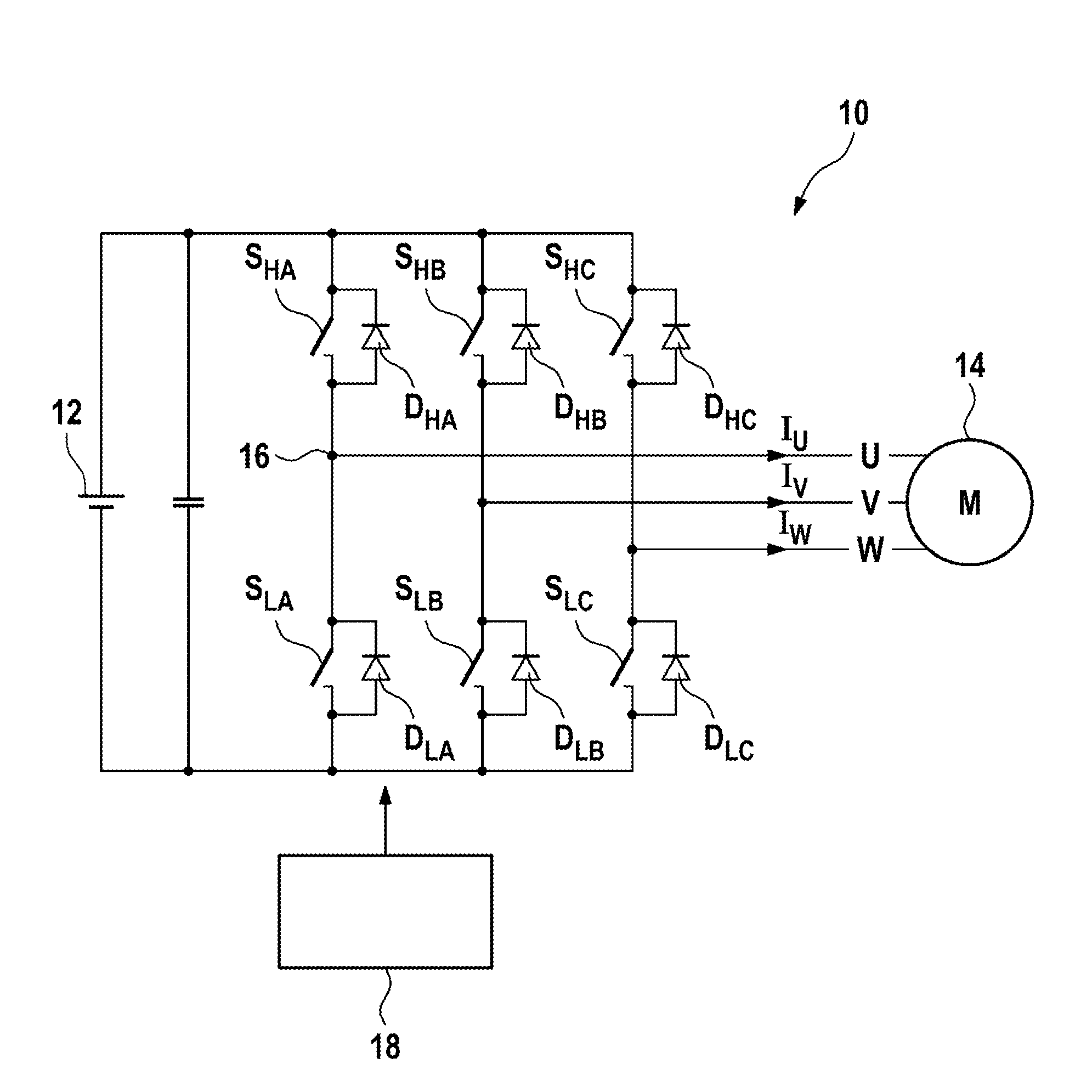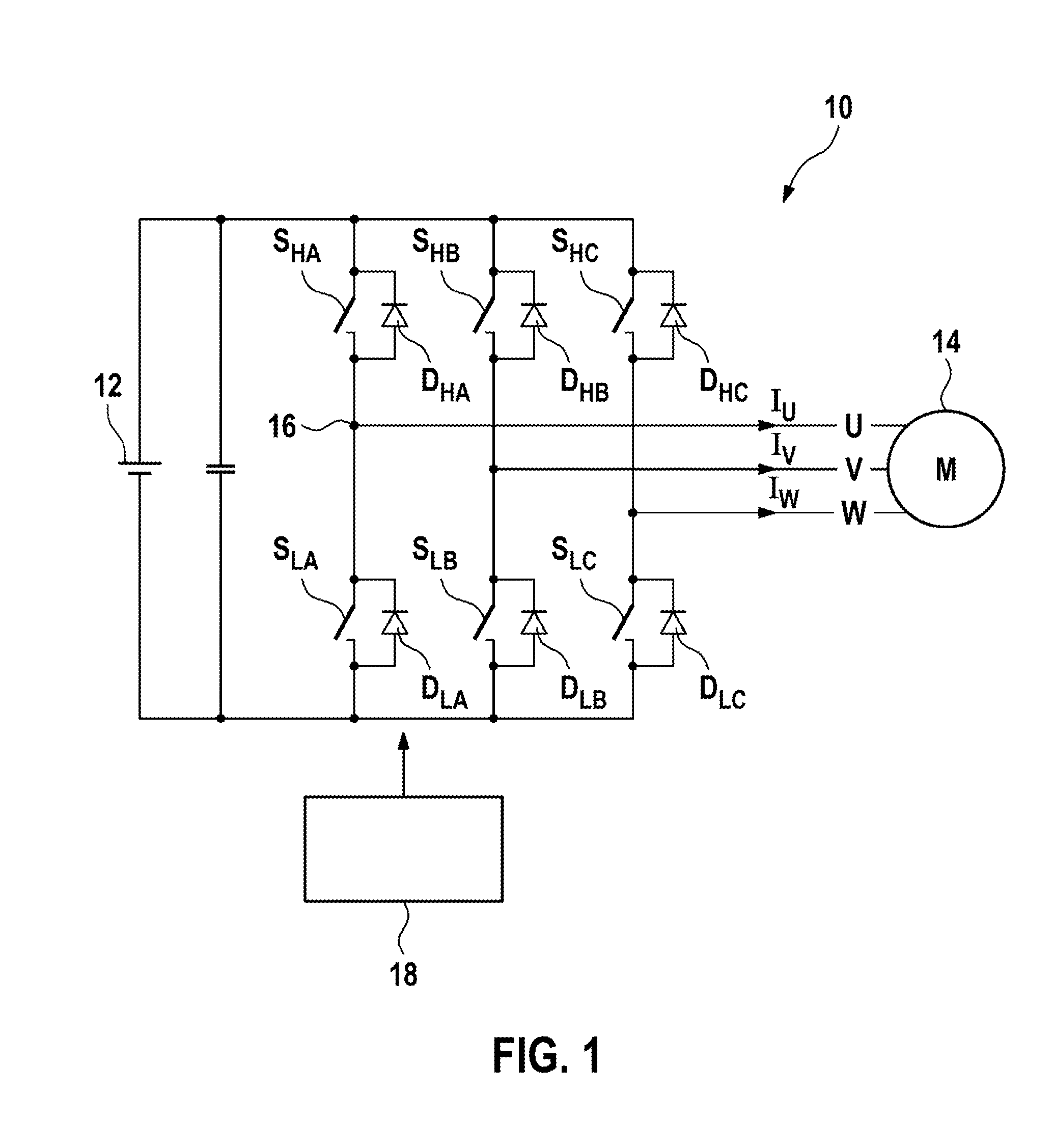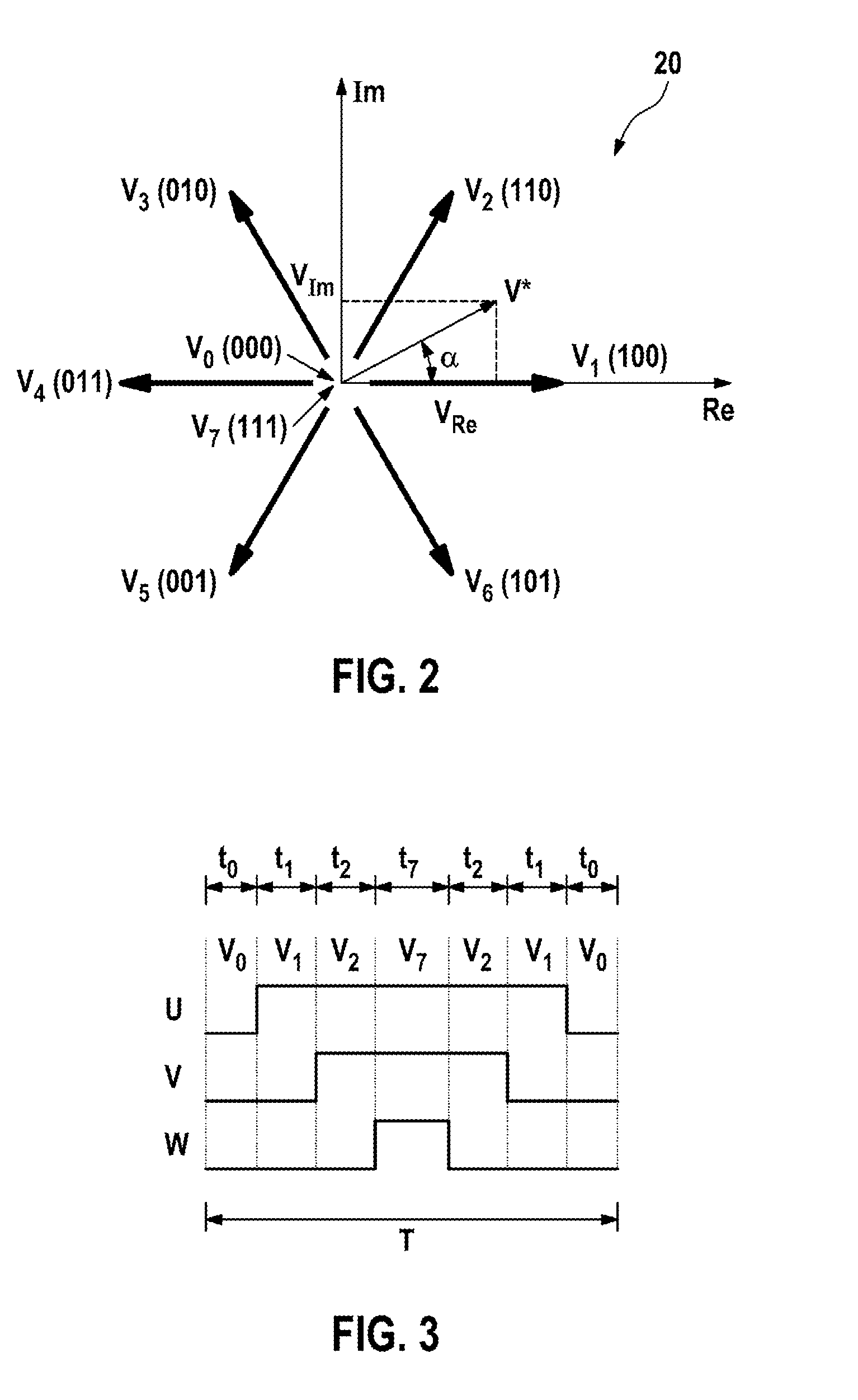Method and device for controlling an inverter
- Summary
- Abstract
- Description
- Claims
- Application Information
AI Technical Summary
Benefits of technology
Problems solved by technology
Method used
Image
Examples
Embodiment Construction
[0049]FIG. 1 schematically illustrates an inverter for controlling an electrical load, in particular an electrical machine, which inverter is generally denoted by 10.
[0050]The inverter 10 is connected to a DC voltage source 12 and is used to energize the electrical load 14, which in this case is designed as an electrical machine 14, in a three-phase fashion. The inverter has three half-bridges which are connected in parallel with the DC voltage source 12 and have in each case two controllable switches S. Between the switches S, a half-bridge tap 16 is formed in each case, which half-bridge taps are each connected to a phase conductor of the phases U, V, W of the electrical machine 14.
[0051]In each case, a freewheeling diode D which enables a flow of current in the opposite direction is connected in parallel with the switches S.
[0052]In FIG. 1, the switches S are denoted by SHA, SLA, SHB, SLB, SHC, SLC corresponding to the phase U, V, W which they provide and corresponding to the ass...
PUM
 Login to View More
Login to View More Abstract
Description
Claims
Application Information
 Login to View More
Login to View More - R&D
- Intellectual Property
- Life Sciences
- Materials
- Tech Scout
- Unparalleled Data Quality
- Higher Quality Content
- 60% Fewer Hallucinations
Browse by: Latest US Patents, China's latest patents, Technical Efficacy Thesaurus, Application Domain, Technology Topic, Popular Technical Reports.
© 2025 PatSnap. All rights reserved.Legal|Privacy policy|Modern Slavery Act Transparency Statement|Sitemap|About US| Contact US: help@patsnap.com



